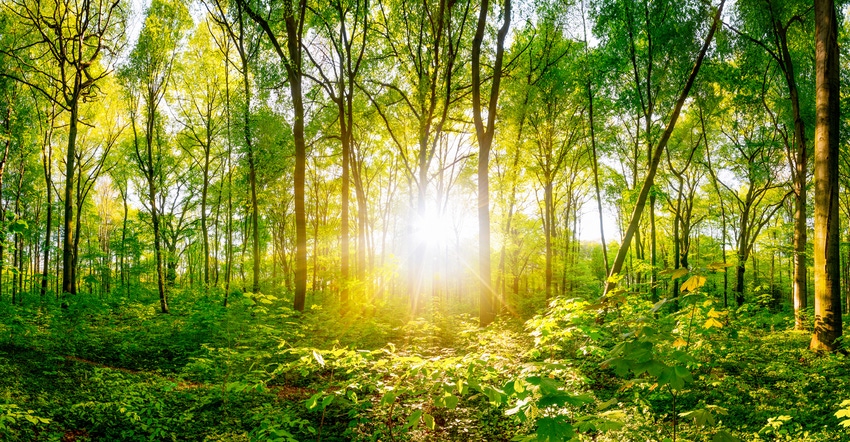May 7, 2021

Many ornamental plants in our landscapes are not indigenous to North America. They came to our shores thanks to their unique ornamental qualities, such as seasonal flowers or coloring or interesting bark.
Unfortunately, even under the most noble and good intentions, some of these plants can and have become invasive. The flowering pear is a good example. Also known as a callery pear, ornamental pear or commercially as a Bradford pear, these trees are not to be confused with the common pear tree, which bears fruit.
The Bradford’s problems
The callery pear has been with us since it was introduced from Asia in the early 1900s. In the 1950s, the Bradford cultivar was widely planted as a promising new ornamental that was resistant to a bacterial disease known as fire blight. The tree is one of the first to bloom in the spring, with showy white flowers. In the fall, the leaves turn a dark reddish-purple. It is a fast grower and will tolerate a variety of environmental conditions, which makes it highly adaptable to harsh urban and suburban growing conditions. Other desirable features include a pyramidal growth habit, dark green glossy leaves and smooth gray bark.
Unfortunately, the Bradford pear is also very prone to wind, ice and heavy snow damage due to its narrow branch crotch attachments. Following a windstorm or snowstorm, you have probably seen Bradford pears with limbs broken out. Sometimes, they break for no apparent reason.
Another problem: Birds eat its fruit and spread its seed, allowing it to rapidly invade open spaces such as pastures, grasslands and open woodlands. Individual cultivars are self-sterile, but different cultivars planted in close proximity may cross-pollinate, producing fruits and viable seed. Shoots from rootstock developed with varying genotypes are also able to cross-pollinate with the original tree.
Branches of naturalized callery pear often grow thorns, which makes it difficult and painful for wildlife and humans to transit dense thickets. These dense thickets also crowd out native flowering and woody plants, reducing productive grassland wildlife habitat. Dense planting in urban and suburban areas provides an abundance of nesting sites for gregarious blackbirds, grackles and starlings, which can lead to public health hazards.
And even though the tree has pretty white flowers, they smell a lot like rotting fish. If you’ve stood downwind of a flowering callery pear, you know what I mean.
So what is a landowner to do about callery pear? To control it is to have zero tolerance:
Be aggressive and committed to eliminating the tree.
The tree is a vigorous sprouter, so you must remove the stump and roots.
Mowing will not get the job done.
Newly established trees can be sprayed with a foliar herbicide.
For trees 4 to 6 inches in diameter at the base, kill with a basal bark herbicide application.
For cut stump treatments, spray the stump thoroughly within 10 to 15 minutes of cutting.
Keep in mind that even young saplings (as early as 3 years of age) can produce large amounts of seed. Follow-up treatments may be required.
Miller is a horticulture professor at Joliet Junior College in Joliet, Ill., and a senior research scientist in entomology at The Morton Arboretum in Lisle, Ill. Email your tree questions to him at [email protected]. The opinions of this writer are not necessarily those of Farm Progress/Informa.
About the Author(s)
You May Also Like




